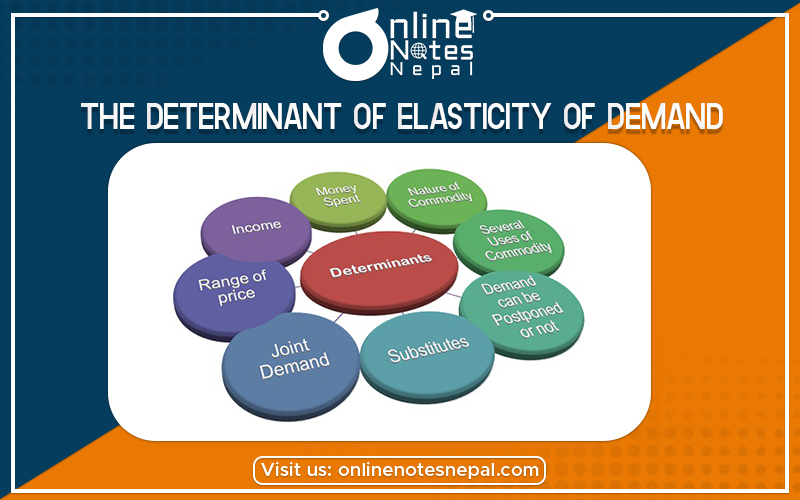Published by: sadikshya
Published date: 28 Jun 2021

The following factors are the determinant of Elasticity of Demand
• Nature of commodity
• Jointly demanded goods
• Substitute goods
• Multiple-use of goods
• Postponement of use
• The income of the consumer
• Reputation of demand
• Maximum and minimum price level
• Normal price level( average of price)
• Time
The elasticity of demand varies with the types of wants satisfied by the commodities, necessities such as food, cloth, cool drink, and sugar and minimum elasticity of demand, comforts like tube light, scooter, fridge have unitary elasticity of demand. Luxurious goods such as ornaments jeweler cars etc have more elasticity of demand.
For the satisfaction of common demand, many goods are required such as pen, ink, and paper. The price rise of one commodity reduces the demand for other commodities. The demand for these commodities is less elasticity.
The goods also are known as competitive goods certain wants are satisfied by multiplying goods such as tea and coffee. The price rise of one commodity increases the demand for other commodities, this has more elastic demand. Commodities having no substitute bear less elastic demand. The availability and closeness of substitutes increase elasticity.
Certain commodities such as coal, electricity, and milk have different uses. A slight increase in their price reduces the demand largely such as costly electricity is not used by households this has elastic demand.
In the case of comfort and luxurious, a slight increase in price causes deferment of their use such as a 10% increase in the price of the car reduces the demand for a car by 60%. It shows luxurious commodities bear more elastic demand.
Low earning consumers use necessities that have minimum elasticity of demand. High earning consumers purchases luxurious commodities having more elasticity of demand. Average earning groups for comforts bearing unitary elastic demand.
A customer using a particular commodity regularly becomes habitual of it and his demand for such commodity is less elasticity. The casual user commodities such as goods demand on ceremonies are more elasticity in demand.
At each, to the level of prices, consumers are not induced to decrease and increase their demand for commodities. The price elasticity of demand at these levels of the price is minimum.
At this level of prices a minimum rise or fall in price decreases and increases of demand largely. Demand is more elastic at this level of price.
In a short period, there are limited chances for the demand to change while in a long period. Demand changes frequently short period is having less elastic demand while the long period is having more elastic demand, the time frame is very important to determine elasticity.